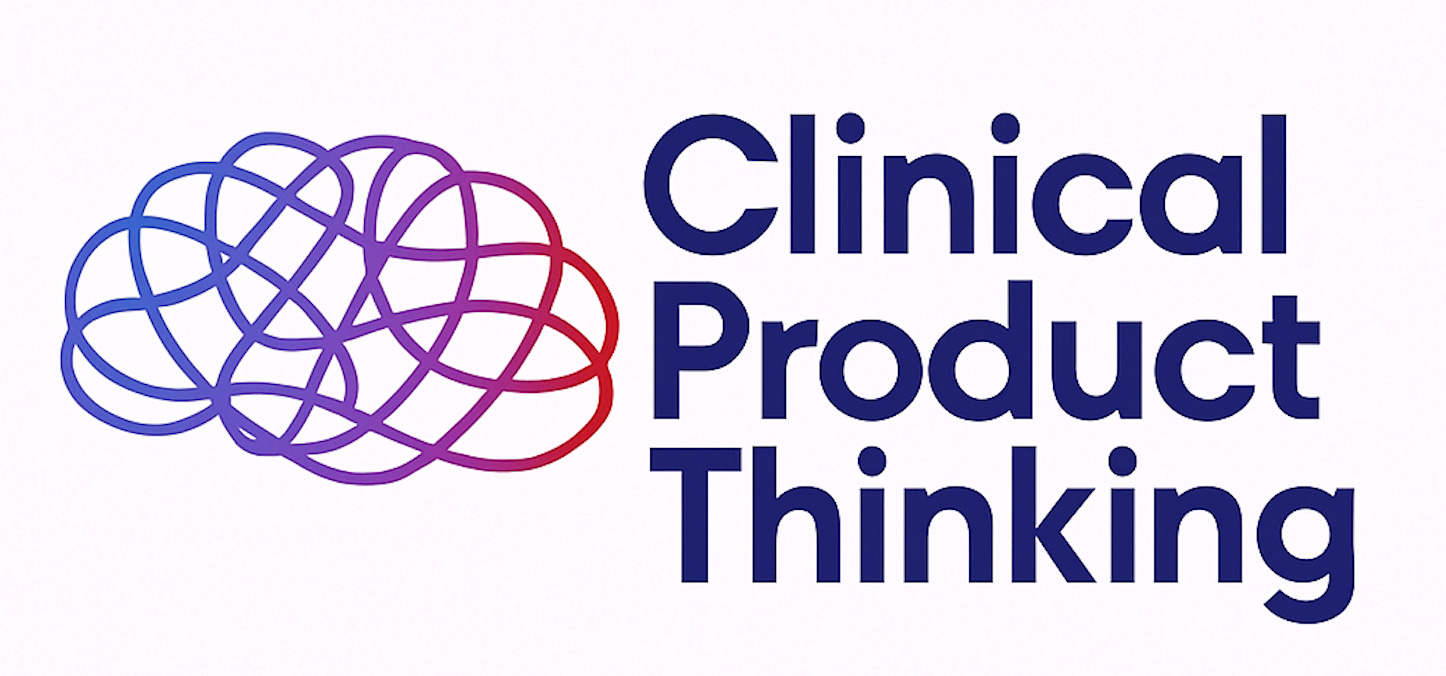The Rise of Clinical Product Management
The new discipline making digital health work in practice 🏥.
The global HealthTech market is nearly at $1 trillion, but many companies are still wrestling with a core challenge: ensuring digital solutions actually work in the messy reality of healthcare.
Brilliant engineering and nifty design matter, but they're often not enough to deliver real health outcomes. Enter Clinical Product Managers (CPMs), who understand what's technically possible and what's clinically meaningful.
Yet despite this, clinical product is one of the most misunderstood disciplines in digital health. So, what do CPMs do, and why are they critical?
What Is Clinical Product Management?
Traditional product management focuses on driving engagement and revenue. Clinical product managers balance those goals with something far more complex: improving health outcomes.
If we had to define the role:
Clinical product managers improve clinical outcomes through product innovation while ensuring patient safety.
Let’s unpack that definition:
Improve clinical outcomes
It’s not just about features, it’s about impact. CPMs care deeply about outcomes:
Patient outcomes: Reducing morbidity or mortality, improving health indicators (e.g. weight, blood pressure), enabling preventative care, including at a population level (e.g. screenings, risk stratification).
Operational outcomes: Reducing wait times, cutting admin overhead, improving access and reducing costs.
Clinician outcomes: Supporting decision-making, reducing admin burden and improving care team communication.
Drive product innovation
CPMs bring clinical context to product decisions, helping teams by:
Surfacing unmet needs: Using clinical experience to spot gaps or opportunities for improvements in care delivery.
Redefining the problem: Moving beyond digitising existing workflows to reimagining care models based on what patients and clinicians truly need.
Designing user-centred solutions: Creating intuitive, inclusive experiences that work for real users, whether they're a GP on the go or a patient managing a chronic condition at home.
Ensuring patient safety
This is where clinical product management becomes mission-critical:
Safety by design: Embedding safety principles from the outset of product development, identifying potential hazards and ensuring mitigations are in place.
Balancing innovation with risk: Weighing clinical risk alongside user and business needs, ensuring that novel solutions do not compromise patient care.
Monitoring and mitigation: Implementing processes to track clinical risks, respond to safety incidents and ensure compliance with relevant standards (e.g. DCB 0129/0160, ISO 14971).
Clinical product ensures the clinical context isn’t an afterthought; it’s baked in from day one. That’s how you end up with tools patients actually want to use, solutions that slot into care workflows and clinicians who trust what you’ve built.
Key CPM Skills
Most clinical product managers come from a clinical background, such as medicine, nursing, physiotherapy, or psychology, and learn product on the job. Others are product managers who upskill on clinical nuance. Whatever the route, great CPMs combine rigour, empathy and strategy. The core skillset includes:
Clinical insight: A deep understanding of patient care, clinical decision-making and the realities of frontline practice.
Product development: Experience with agile development, user research and iterative design. Not just building things right, but building the right things.
Systems thinking: Seeing the bigger picture, how workflows, incentives, tech and human behaviour interact in real-world healthcare settings. Spoiler: it's messier than you think.
Evidence literacy: Knowing how to read and critically evaluate data.
Translation skills: Bridging the gap between clinicians, engineers, designers and executives. Making clinical needs make sense to non-clinical stakeholders and vice versa.
Regulatory fluency: Understanding how to build within complex safety, compliance and governance frameworks, without killing innovation.
The secret sauce? Clinical scepticism + product optimism.
What’s not required (in my opinion):
❌ An MBA (clinical experience trumps business school)
❌ Perfect technical skills (you can learn to code; understanding clinical nuance is more important)
❌ Previous PM experience (many learn on the job)
Why This Role Matters Now
Clinical Product Management is no longer a nice-to-have; it’s a strategic necessity. Three key forces are driving its rise:
Regulatory expectations are rising: Regulators are increasingly setting the pace. In the US, the FDA’s Digital Health Center of Excellence is tightening standards for clinical evidence in digital therapeutics, clinical decision support and trial technologies. In the UK, the MHRA is issuing fresh guidance for digital health and AI, while NICE has raised the bar with its updated Evidence Standards Framework. Guidance is coming fast, and the bar for safety, validation and real-world performance keeps climbing.
ROI now means outcomes, not just engagement: Healthcare systems are under pressure to deliver results. It’s no longer enough to build tools that patients like; you need to show they work. Outcomes, cost-effectiveness and real-world performance are the new success metrics.
Clinical integration is becoming table stakes: The most successful HealthTech companies don’t disrupt care; they integrate into it. Seamless clinical workflow integration is becoming non-negotiable, especially in the NHS, where the 10-Year Plan prioritises digital enablement across the board.
Why We Need More Clinician-Builders
Clinical Product Management is one of the most exciting roles in HealthTech right now. It’s not always easy but it is deeply meaningful. CPMs ensure products are safe and genuinely improve lives.
If we’re serious about transforming care, we need more people who can think clinically and build strategically.
🤝 Work with me | 📅 Attend an event | | ✍️ Send a message
Made with ❤️ for better, safer HealthTech.




Hi, Dr. Louise.
I would love to have an opportunity to jump on a call with you.
We are building a platform that will facilitate the preparation of the patient pre-admission and help them through the post-discharge period, focusing on DVT and PE prevention amongst others. I'd love to discuss this with you and get your thoughts.
I would be deeply grateful if we could discuss you potentially participating as a mentor, advisor, or non-executive board member. If you would be interested, that would be fantastic.
No, it sounds stupid and cliché, but we're still in stealth at the moment, so we don't have our website up and running. But I will leave my email address.
willem@vivavivo.ai
Please let me know if you are open to discussion.